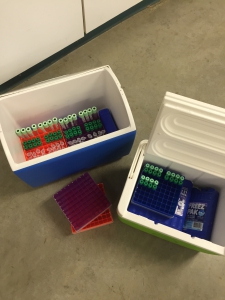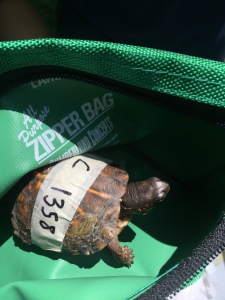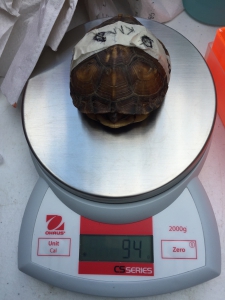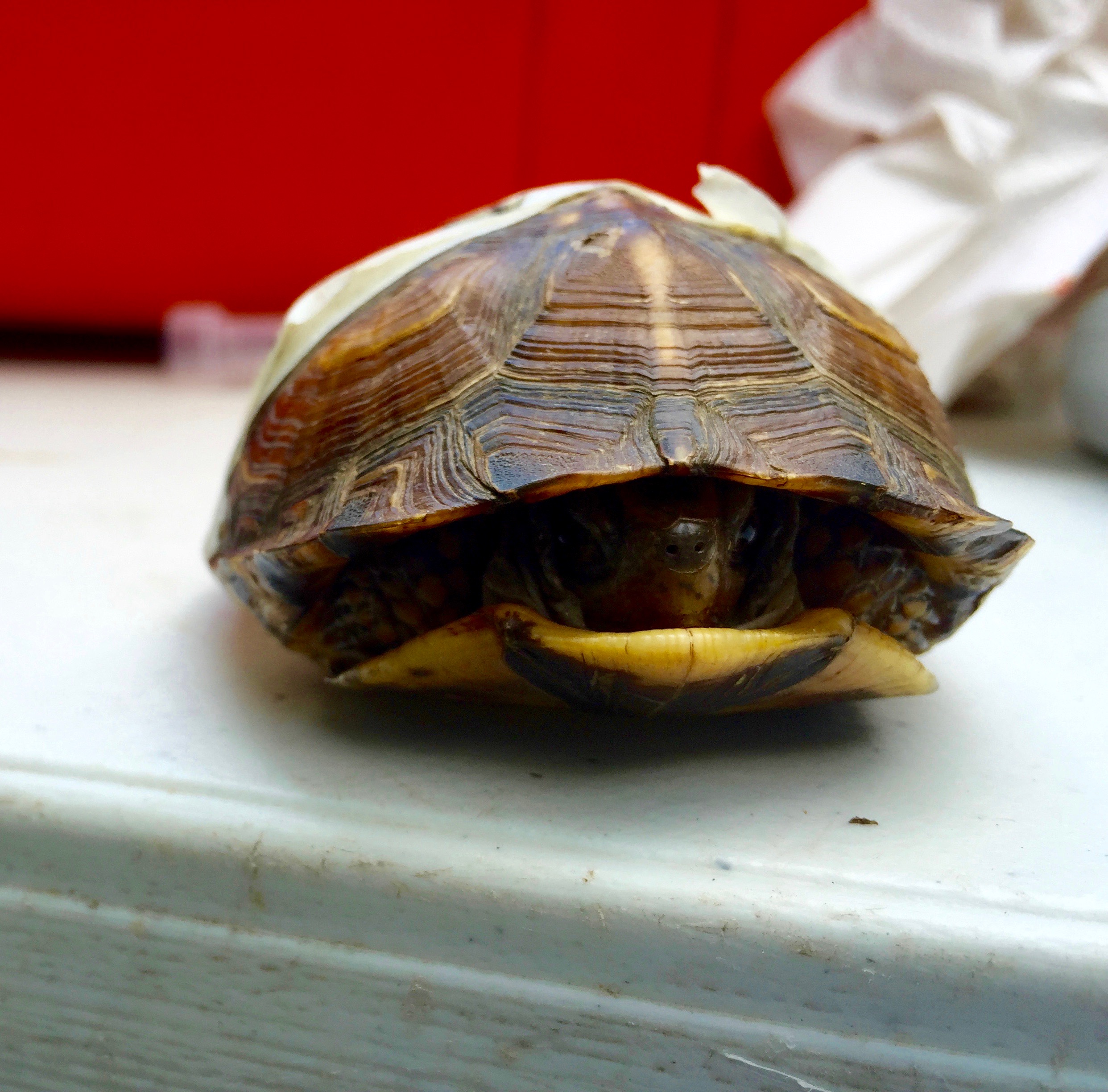The Amphibian Pathogen Project took a brief pause the week of June 27 to allow the legendary Turtle Team to come tracking for box turtles in Oak Ridge. Many of you already know that I became involved with the W.E.L. through Turtle Team activities in Illinois and it has proven to be a top highlight of my veterinary education. Naturally, I was very excited for the “turtling” activities to begin!
So what exactly is Turtle Team and why would it take precedence over ensuring the general health of amphibians in Anderson County? It’s the largest Eastern Box Turtle health study … EVER! The goal: to assess the health of free ranging box turtles to help improve their conservation status (they’re listed as IUCN Vulnerable) and use this information to assess nearby ecosystem health. Pretty impressive, eh?
And we don’t do all of this ourselves. We employ the expert assistance of John Rucker and his turtle-sniffing Boykin Spaniels to locate these slow-moving reptiles. On average, the dogs can find 7-9 turtles in the time it takes a human to find only one, an occurrence known as an ‘incidental finding.’ When a turtle is discovered, the team springs into action to label the animal, record a GPS coordinate and flag the location where it was found so it can be returned later. Each critter receives a free ride in a comfortable wilderness taxi (a zipper pouch pencil case placed into a backpack) to our pop-up field station where it will be “worked up.”
Components of the “Work Up”:
- Identify if the turtle is a novel capture or a re-capture (this can be an arduous task)
- Morphometric data: weight and measurements of carapace, plastron, height and width of shell
- Physical exam performed by Dr. Allender (THE turtle Dr.) assesses the eyes, nose, oral cavity, limbs, skin and shell condition
- Oral and cloacal swabs are taken for pathogen screening back in lab (we’re looking for ranavirus, adenovirus, herpes and mycoplasma)
- Blood is drawn to look at plasma blood chemistry, % red blood cells, and the number and type of white blood cells
- Heart rate is taken via a fetal Doppler probe (new this year)
- Temperature is taken with a thermal camera at the time of capture and work up
All of the data we collect can be used to infer trends on the health status of individuals and the box turtle population as a whole.

Coolers loaded with icepacks and blood tubes. All pre-labeled!

A box turtle sits in it’s personal zipper pouch

The Eastern box turtle, Terrapene carolina carolina, is generally smaller in size than populations found in IL.
Please refer to Kayla’s blog for a more detailed account of work in the field and lab on all things Turtle Team!

